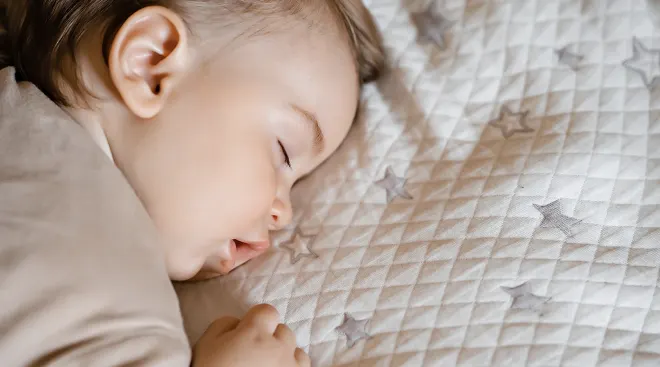Creating a safe sleep environment for your baby is crucial for their well-being and your peace of mind. By following recommended guidelines, you can significantly reduce the risk of sudden infant death syndrome (SIDS) and other sleep-related accidents. Here’s a comprehensive guide to safe baby sleep practices.
The ABCs of Safe Sleep
A – Alone:
- No Co-Sleeping: Always place your baby to sleep in their own crib or bassinet. Avoid bed-sharing, which can increase the risk of suffocation or accidental injury.
- No Loose Bedding or Toys: Keep the crib free from pillows, blankets, bumper pads, stuffed animals, and other soft items. These can pose a suffocation hazard.
B – Back:
- Back to Sleep: Always place your baby on their back to sleep, for both naps and nighttime sleep. This position has been shown to reduce the risk of SIDS.
C – Crib:
- Safe Sleep Surface: Ensure the crib, bassinet, or portable crib meets current safety standards. The mattress should be firm and fit snugly within the crib, with no gaps.
- Bare is Best: The crib should have only a fitted sheet over the mattress. Avoid using sleep positioners or wedges.
Creating a Safe Sleep Environment
1. Choose a Safe Sleep Space:
- Use a crib, bassinet, or portable crib that meets safety standards. Check for recalls and ensure the product has not been modified or damaged.
- Avoid placing the crib near windows, blinds, or cords, which can pose strangulation hazards.
2. Maintain a Comfortable Temperature:
- Keep the room at a comfortable temperature, similar to what an adult would find comfortable. Overheating can increase the risk of SIDS.
- Dress your baby in sleep clothing, such as a wearable blanket, to keep them warm without the need for loose blankets.
3. Practice Safe Swaddling:
- If you choose to swaddle your baby, ensure the swaddle is snug around the arms but loose around the hips to allow for healthy hip development.
- Stop swaddling once your baby shows signs of rolling over.
Nighttime Feeding and Comforting
1. Breastfeeding:
- Breastfeeding has been shown to reduce the risk of SIDS. If possible, breastfeed your baby and ensure they are placed back in their crib on their back after feeding.
2. Pacifiers:
- Offering a pacifier at naptime and bedtime can reduce the risk of SIDS. If your baby is breastfeeding, wait until breastfeeding is well-established (usually 3-4 weeks) before introducing a pacifier.
- Do not force your baby to take a pacifier if they are not interested, and do not reinsert it once they fall asleep.
Monitoring and Routine
1. Use a Baby Monitor:
- While baby monitors can provide peace of mind, they are not a substitute for safe sleep practices. Always follow safe sleep guidelines, even with a monitor in use.
2. Establish a Sleep Routine:
- A consistent bedtime routine can help signal to your baby that it’s time to sleep. This might include activities such as a warm bath, gentle rocking, or reading a story.
Additional Safety Tips
1. Avoid Smoke Exposure:
- Keep your baby’s environment smoke-free. Exposure to smoke increases the risk of SIDS.
2. Stay Informed:
- Stay up-to-date with the latest recommendations from reputable organizations such as the American Academy of Pediatrics (AAP). Guidelines may evolve as new research emerges.
3. Share Safe Sleep Practices:
- Ensure that all caregivers, including grandparents, babysitters, and daycare providers, are aware of and follow safe sleep practices.
Conclusion
By adhering to these safe sleep practices, you can create a secure environment that promotes healthy sleep and reduces the risk of sleep-related accidents for your baby.
Remember, every step you take towards ensuring safe sleep is a step towards protecting your baby’s health and well-being.

